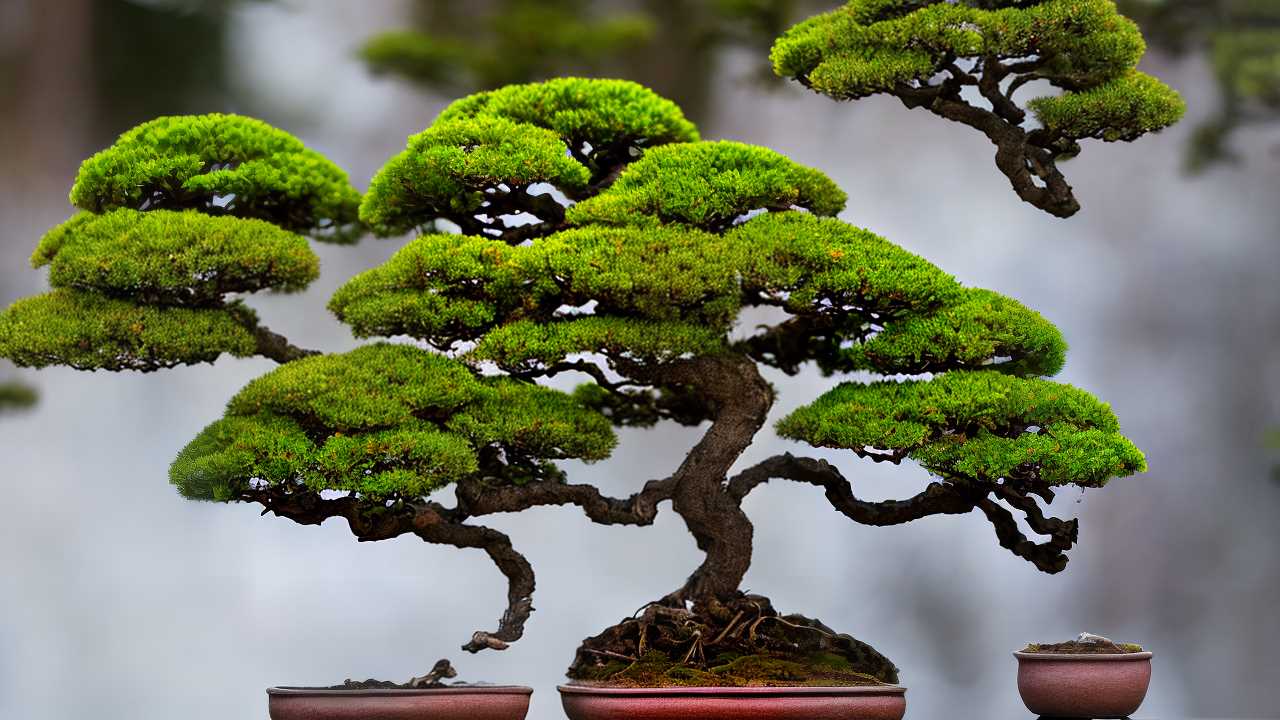
Introduction to Bonsai
Bonsai is the ancient Japanese art of growing miniature trees in small containers. The practice of bonsai cultivation has been around for over a thousand years, and it continues to captivate plant enthusiasts around the world. Bonsai trees are not genetically modified to stay small; instead, they are carefully trained and pruned to maintain their miniature size and shape. With the right care and attention, a bonsai tree can live for decades or even centuries.
Choosing the Right Bonsai Tree
When starting your bonsai journey, it is essential to choose a tree species that is well-suited to your climate and level of experience. Some popular choices for beginners include:
1. Ficus
2. Japanese Maple
3. Chinese Elm
4. Juniper
Consider factors such as the amount of sunlight and humidity in your home, as well as your willingness to commit to regular bonsai maintenance.
Watering Your Bonsai Tree
Proper watering is crucial to the health and longevity of your bonsai tree. Bonsai trees typically require more frequent watering than traditional houseplants due to their small containers and limited soil capacity. The frequency of watering will depend on factors such as the species of tree, the size of the container, and the environmental conditions.
As a general rule, water your bonsai when the top inch of soil feels dry to the touch. Water thoroughly until excess water drains from the bottom of the container, and then allow the soil to dry slightly before watering again. Be careful not to overwater, as this can lead to root rot and other health issues.
Pruning and Shaping Your Bonsai Tree
Regular pruning is essential to maintaining the miniature size and desired shape of your bonsai tree. Pruning involves removing branches, leaves, and roots to encourage healthy growth and maintain the tree's aesthetic appearance.
When pruning your bonsai, use clean, sharp tools to avoid damaging the tree. Remove any dead, diseased, or crossing branches first, and then shape the remaining foliage to your desired style. Be patient and gradual with your pruning, as overly aggressive pruning can shock the tree and hinder its growth.
Soil and Fertilization
Bonsai trees require a well-draining soil mixture that provides adequate nutrition and aeration for the roots. A typical bonsai soil mix consists of akadama (a type of clay), pumice, and organic matter such as peat moss or composted bark.
Regular fertilization is also important to ensure your bonsai receives the necessary nutrients for healthy growth. Use a balanced, water-soluble fertilizer formulated specifically for bonsai trees, and follow the manufacturer's instructions for application frequency and dosage.
Repotting Your Bonsai Tree
As your bonsai tree grows, it will eventually outgrow its container and require repotting. Repotting allows you to refresh the soil, prune the roots, and choose a container that accommodates the tree's increasing size.
The frequency of repotting depends on the species and age of your bonsai, but a general guideline is to repot every 2-5 years for young trees and every 3-7 years for mature trees. Repot your bonsai in early spring, just before the tree begins its active growing season.
Conclusion
Bonsai cultivation is a rewarding and engaging hobby that allows you to nurture and shape miniature living works of art. By providing your bonsai tree with proper watering, pruning, soil, and maintenance, you can enjoy its beauty and tranquility for years to come. Remember, the key to successful bonsai care is patience, dedication, and a willingness to learn from your experiences as your tree grows and evolves.
